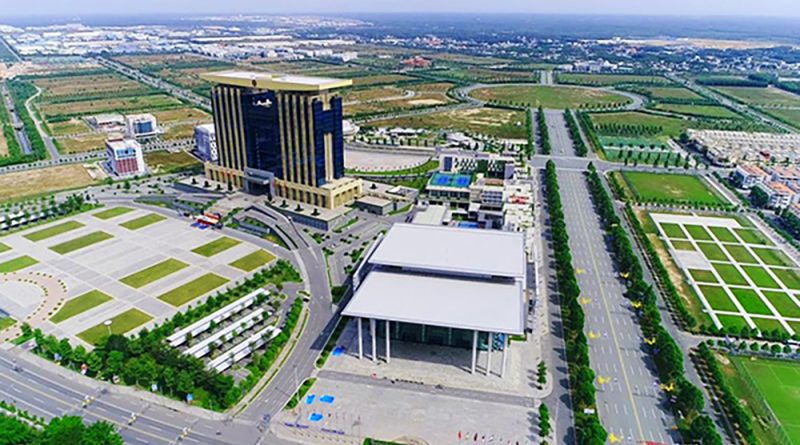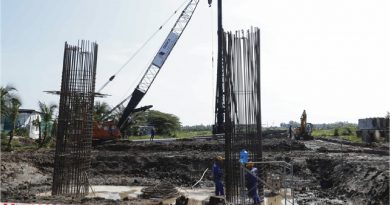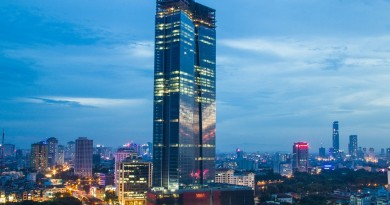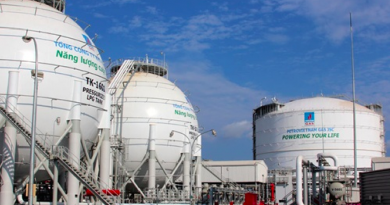Vietnam’s industrial property to boom amid projected rising FDI inflows
Property services company Savills Vietnam believes that growing foreign direct investment and moving up in the value chain mean Vietnam’s industrial real estate sector has a bright future.
New free trade deals and the transformative shift of the manufacturing base from China to Vietnam will create an investment wave in the South East Asian country’s industrial property sector, experts forecast.
Vietnam’s competitiveness is driven by low labor costs, affordable land, favorable corporate income tax rates, a dynamic workforce, and a geographical location near source and destination markets.
According to Ngo Anh Tuan from the National Economics University, after FTAs such as the EU-Vietnam Free Trade Agreement and the Trans-Pacific are signed and put into effect, Vietnam will be the destination of large foreign firms to take the country’s advantages of tax incentives and competitive labor costs.
Property services company Savills Vietnam also believed that growing foreign direct investment and moving up in the value chain mean Vietnam’s industrial real estate sector has a bright future.
“This is very fertile ground. We see a lot of FDI into manufacturing from Japan, South Korea, Singapore and Thailand,” says Troy Griffiths, Savills deputy managing director for Vietnam.
Besides, Ryan Severino, chief economist at US property services company Jones Lang LaSalle, commented that as the tit-for-tat trade dispute escalates, foreign investors are leaving China to save on manufacturing costs.
The trade war will incite many large-scale manufacturers to set up their factory systems in Vietnam, Severino said.
In addition to this, the country’s proximity to China makes it a worthy option for manufacturers looking at alternative locations in the Southeast Asian region because the operating cost in China has been continuously increasing in recent years.
“Increasing land rent for industrial properties in China has put forward Vietnam as the next destination for investors, as it is near China and has reasonable labor costs,” Severino said.
Sharing the same view, Nguyen Thi Thanh Huong, general director of Dai Phuc Land, said that as the trade conflict with the US escalates, many investors are withdrawing from China to neighboring countries like Vietnam.
Foreign investment into Vietnam will strongly increase for a couple of years starting from the end of this year, Huong forecast, adding that the trade conflict will be an opportunity for industrial properties and storage houses.
Besides, Vietnam is also an attractive destination for industrial and logistics development thanks to its advantageous geographical position, with access to the world’s major seaborne trade routes that offer the country huge opportunities to develop its maritime transport.
Nascent market
Meanwhile, the industrial property market in Vietnam, including industrial land, ready-built factories, warehouses and logistics properties, is still in a nascent stage of development, which will give big opportunities for new players.
The market is concentrated in three key zones: the northern, central and southern key economic zones. Of which, the southern region was the first hub and home to conventional sectors while the north has attracted more advanced high-tech industries and is strategically located close to China. The central region is a relative newcomer.
According to Jeffrey Perlman, managing director and head of Southeast Asia of Warburg Pincus, with the transformative shift of the manufacturing base from markets like China to Vietnam as well as with the rapid rise of domestic consumption, the logistics and industrial real estate market in Vietnam is at an inflection point for outsized growth.
To optimize the high growth potentials of the sector, experts said that administrative reforms must be hastened in order to facilitate investment, together with improving the infrastructure system for industrial zones.
According to Nguyen Thanh Ha, chairman of SBLaw firm, developers should build industrial zones with proper infrastructure systems and lease them at reasonable prices, while the government should pay attention to developing the parts-supplying industry and improving transport connectivity.
Source: hanoitimes.vn










